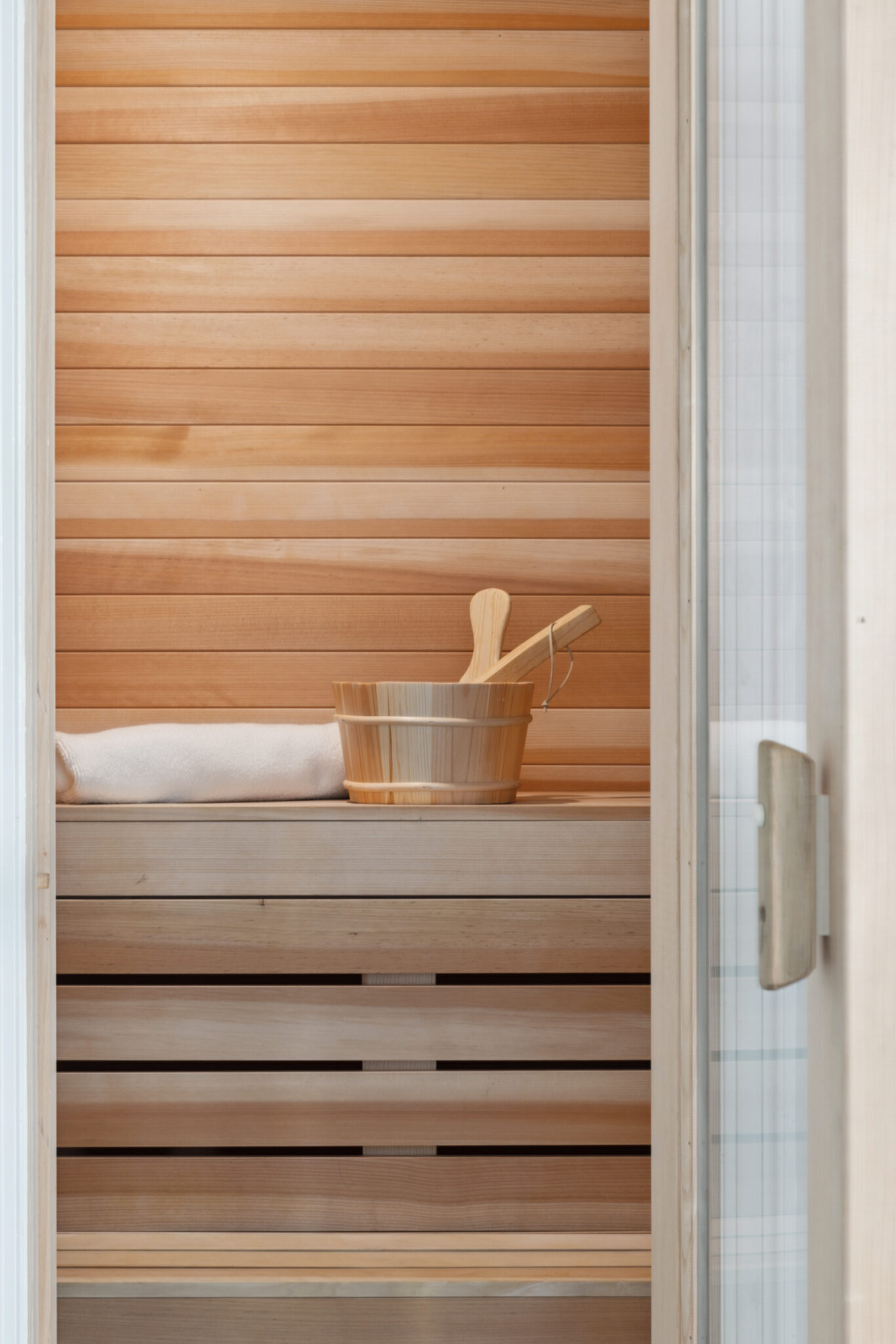While the installation of home gyms has been on the rise in recent years, especially for their convenience, other home spa-like amenities, such as saunas, are becoming popular as well. Mary Gordon, Co-Founder of InSite Builders & Remodeling, www.insiteremodeling.com, says her design-build team has installed two saunas in homes recently and sees them becoming more in demand. Gordon shares her thoughts on brands and tricks of the trade for installing a sauna in your home.
Why do you think there is a rise in the requests for home saunas?
At InSite, we started seeing increased demand for home saunas during the pandemic, when people became more focused on personal wellness and enhancing their living spaces. With limited access to traditional gyms and spas, homeowners began prioritizing amenities that promote exercise and relaxation. Studies show that regular sauna use supports both heart and mental health, while heat therapy helps relax muscles, reduce stress, and relieve pain—making saunas a valuable and popular addition to home wellness routines.
What are homeowners saying about the benefits of saunas?
Homeowners who have installed saunas love having a dedicated place for relaxation and recovery, especially when incorporated into a home gym. Many say the deep heat eases muscle tension and provides an effective way to unwind after a stressful day. Given their range of health benefits—from stress relief to cardiovascular improvements—saunas have become an accessible and rewarding home upgrade.
What brands have you used in the two recent sauna installations?
For our two recent projects, we installed an infrared CS-2 Malibu sauna from Coastal Saunas in one home, and a custom-made 4x4x7 pre-cut sauna kit from Saunas & Stuff in the other. The custom sauna features a cedar interior—wallboard, ceiling, and trim—paired with a Tylo Sense Sport 7 heater. Both brands offer high-quality, customizable options that integrate seamlessly into residential spaces.
How much space do you need for a sauna? Where are these two installed in the home?
Saunas don’t require a large footprint, but thoughtful planning is key. Ideal conditions include a dry location, proper electrical wiring, adequate ventilation, and a heat-resistant floor. Most saunas are around seven feet tall, with space requirements varying based on design and capacity. In both of our projects, the saunas were installed into basement renovations that also featured dedicated exercise areas, creating a complete home wellness space.
Have you tried a sauna?
I became much more aware of saunas during a trip to Helsinki, where I saw firsthand how deeply embedded they are in Finnish culture. Saunas are a part of daily life in Finland, often paired with contrast therapy—alternating between a cold plunge and intense heat. Wanting the full experience, we visited a public sauna, jumped into the icy Baltic Sea, and then warmed up in the heat of a wood-fired sauna alongside friendly locals! The experience was invigorating and memorable. This long-standing Finnish tradition has contributed to a growing interest in saunas, as more people recognize their health and wellness benefits and how easily they can be integrated into a home environment.



